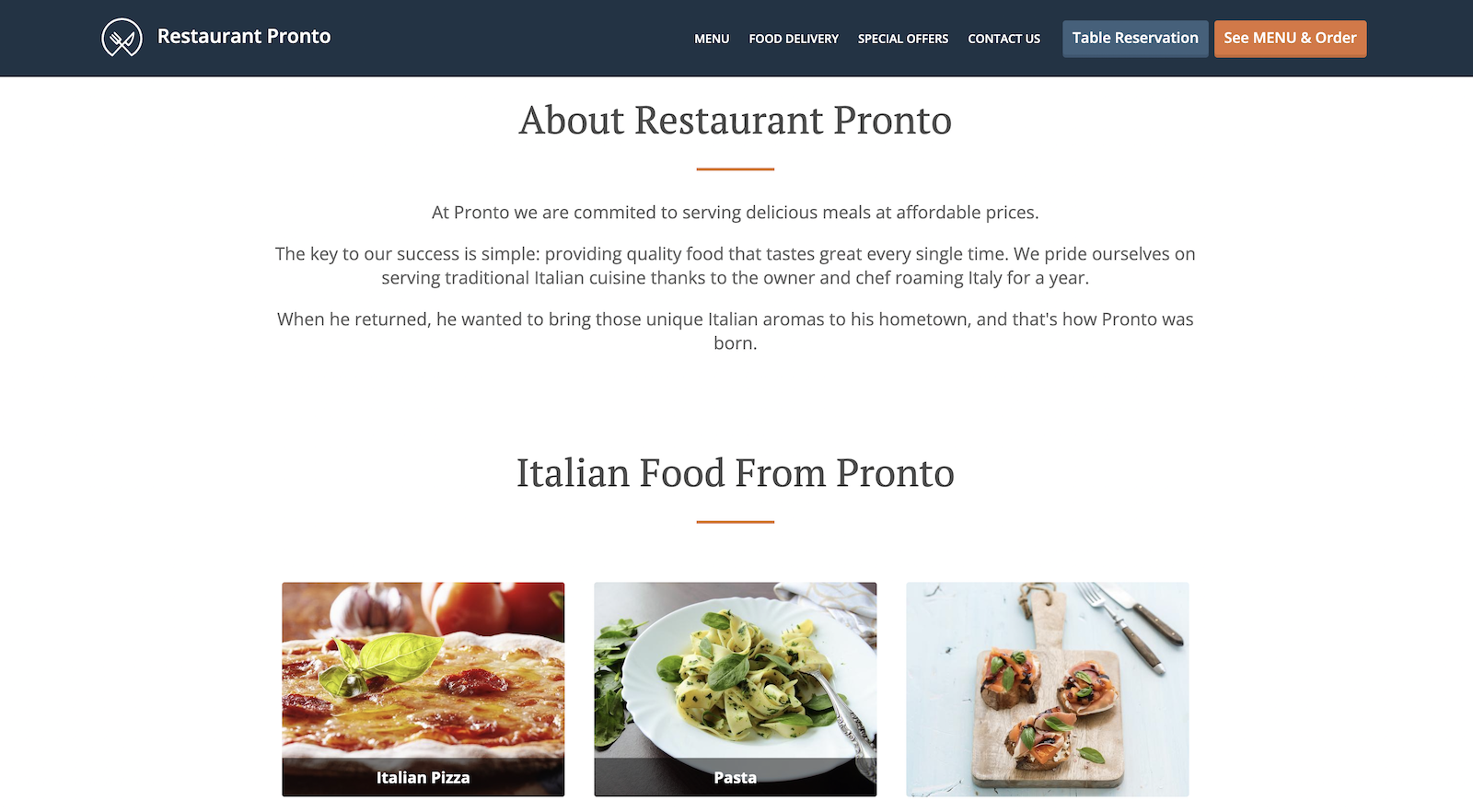- 1.How Has Storytelling in Restaurant Marketing Evolved?
- 2.How Does Restaurant Storytelling Help Restaurants Stand Out?
- Emotional connection
- Differentiation
- Identity and values
- Customer engagement
- Word-of-mouth marketing
- Memorability
- Brand loyalty
- Online presence
- 3.How to Use Restaurant Storytelling to Craft Your Brand Narrative
- Define your restaurant's identity
- Find your story
- Emphasize authenticity
- Connect emotionally
- Be consistent
- Engage with your customers
- Evolve and adapt
- 4.How to Understand and Connect with Your Audience
- 5.How to Address the Challenges & Pitfalls of Restaurant Storytelling
- 6.Conclusion
In the ever-evolving world of restaurant marketing, storytelling isn’t just an option; it’s the secret ingredient to success.
Before we embark on this gastronomic journey, let’s first understand the essence of restaurant storytelling. It’s more than words on a menu; it’s the art of weaving narratives that captivate diners’ hearts.
In this article, we’ll explore why storytelling and brand narratives are not mere buzzwords but the very lifelines of restaurants.
How Has Storytelling in Restaurant Marketing Evolved?
In the age of smartphones and social media, restaurant marketing has witnessed a seismic shift. Traditional methods have taken a back seat as digital platforms claim the spotlight. But why does storytelling matter so much?
Traditional advertisements, eBooks, and brochures are making way for Instagram stories and Yelp reviews. In this digital age, restaurants must adapt the way they tell their story or risk fading into obscurity.
How Does Restaurant Storytelling Help Restaurants Stand Out?
We live in an era where every corner seems to host a culinary gem. Yet, storytelling is the beacon that guides diners to your door. It sets you apart from the masses and makes you unforgettable.
Emotional connection
Storytelling engages customers on an emotional level, creating a connection that goes beyond the food itself. It allows customers to relate to the restaurant, making them feel like they’re a part of its story.
Differentiation
In a competitive market, where menus can often appear similar, storytelling provides a unique selling point. It distinguishes the restaurant from its competitors, making it more memorable and enticing to potential diners.
Identity and values
Through storytelling, a restaurant can convey its culture, values, and mission. It communicates what the restaurant stands for, what it believes in, and what makes it special.
Customer engagement
Effective restaurant storytelling encourages customer engagement and interaction. Customers are more likely to share their experiences, both online and offline, when they feel a personal connection to the restaurant’s narrative.
Word-of-mouth marketing
A compelling story can turn customers into brand advocates. They are more likely to recommend the restaurant to friends and family, becoming ambassadors for the establishment.
Memorability
Restaurants that tell a memorable story are more likely to stay in the minds of customers. When it’s time to choose a place to dine, these customers are more likely to recall and revisit the restaurant.
Brand loyalty
The emotional bond created through restaurant storytelling can lead to brand loyalty. Customers who feel connected to a restaurant’s narrative are more likely to become repeat patrons.
Online presence
In the digital age, storytelling provides valuable content for a restaurant’s website and social media channels. It gives customers something to engage with beyond the menu, drawing them into the restaurant’s world.
How to Use Restaurant Storytelling to Craft Your Brand Narrative
Your brand narrative is your restaurant’s story—its history, values, and mission. It’s the tale that defines you and lingers in the minds of your patrons.
Crafting a compelling brand narrative for your restaurant, along with thoughtfully designed brand elements such as logo and slogan, is a pivotal step in establishing a unique identity and connecting with your target audience.
A well-crafted narrative can evoke emotions, tell a story, and leave a lasting impression on diners, while a distinctive restaurant logo design can serve as a visual anchor for your brand, reinforcing the narrative and making it instantly recognizable to your customers.
Here’s how to create your restaurant’s brand narrative:
1. Define your restaurant’s identity
Start by identifying what makes your restaurant unique. What is your cuisine, values, and mission? What sets you apart from competitors? Use these elements to shape your brand identity.
2. Find your story
Every restaurant has a story waiting to be told. It could highlight heritage branding, the culinary journey of your chef, or a compelling reason why your cuisine is special. The story should resonate with your audience and reflect your values.
3. Emphasize authenticity
Authenticity is key in restaurant storytelling. Be genuine and transparent in your narrative. Customers appreciate honesty, and it builds trust.
4. Connect emotionally
Your narrative should evoke emotions. Whether it’s nostalgia, excitement, or a sense of adventure, your story should make diners feel something.
5. Be consistent
Your brand narrative should be consistent across all platforms – from menu writing to your website, social media, and restaurant decor.
Include a small About Us section on your website’s homepage where you distill your brand narrative in a couple of sentences.
6. Engage with your customers
Encourage customers to be a part of your narrative and share their experiences, reviews, and photos. User-generated content can be a powerful restaurant storytelling tool.
7. Evolve and adapt
As your restaurant grows and changes, so should your narrative. Keep it fresh and relevant.
Your restaurant’s brand narrative is more than just a story; it’s an invitation for customers to join you on a culinary journey. Craft it carefully, and it will become an integral part of your restaurant’s success.
How to Understand and Connect with Your Audience
Your target audience is more than just demographics. You need to understand their lifestyle, aspirations, and the very essence of what drives them to dine out.
By dissecting their tastes, dietary preferences, and cultural influences, you can tailor your menu and messaging to strike a harmonious chord with their desires.
This tailored approach ensures that your restaurant feels like a natural extension of their culinary journey.
Understanding your audience
In the realm of restaurant marketing, connecting with your audience is paramount, and it all begins with understanding them.
Every restaurant caters to a distinctive clientele with specific tastes, expectations, and cultural nuances. Before you can effectively communicate your brand narrative, you must immerse yourself in the world of your target audience.
This entails conducting thorough research, analyzing customer data, and observing consumer behavior. By delving into their preferences, dietary choices, and dining habits, you can uncover valuable insights that will shape your messaging and offerings.
Connecting with your audience
Effective restaurant storytelling extends beyond merely conveying your message; it involves a genuine connection with your audience. Empathy is the bridge that facilitates this connection.
It’s about stepping into the shoes of your customers and grasping their needs, desires, and emotions. When you approach your marketing efforts with empathy, you’re not just focused on selling; you’re committed to understanding and addressing the concerns and aspirations of your patrons.
This empathetic approach forges strong, lasting bonds between your restaurant and its customers, transcending mere transactional relationships.
It breeds trust and loyalty because customers recognize that you’re not just interested in their wallets but in enhancing their dining experiences and meeting their desires.
Empathy is the cornerstone of customer-centric marketing, ensuring that your restaurant remains a place where patrons feel valued and understood.
How to Address the Challenges & Pitfalls of Restaurant Storytelling
Challenges such as limited resources, including time, budget, and manpower, can restrict your ability to create and maintain a compelling narrative. Additionally, finding the right narrative that resonates with your target audience and accurately represents your brand can be a daunting task.
However, it’s important to note that these challenges aren’t roadblocks; they are opportunities for creative problem-solving and growth. Each challenge presents a chance for restaurants to refine their storytelling skills and stand out in a competitive market.
To address these challenges, restaurants can adopt several solutions and strategies. Efficient resource allocation involves prioritizing storytelling efforts that yield the most significant impact while optimizing the use of resources.
Staying agile in a rapidly evolving landscape means being open to adapting and adjusting storytelling approaches based on changing market trends and customer preferences.
Conducting thorough market research and customer surveys can help restaurants identify the most effective narratives for their brand. These strategies empower restaurants to overcome resource limitations and navigate the complex task of crafting a compelling narrative.
In the pursuit of effective storytelling, restaurants must also be mindful of common pitfalls that can derail their efforts. Inauthentic restaurant storytelling, where the narrative feels forced or insincere, can erode customer trust and authenticity. Focus on genuine, relatable narratives that resonate with your audience.
Conclusion
In the final course of our culinary journey, we distill the essence of our exploration. Restaurant storytelling and brand narratives are not just marketing tools; they’re the recipe for unforgettable dining experiences. Craft your brand narrative with care and it will take your restaurant to new heights.
This article is a guest post.

